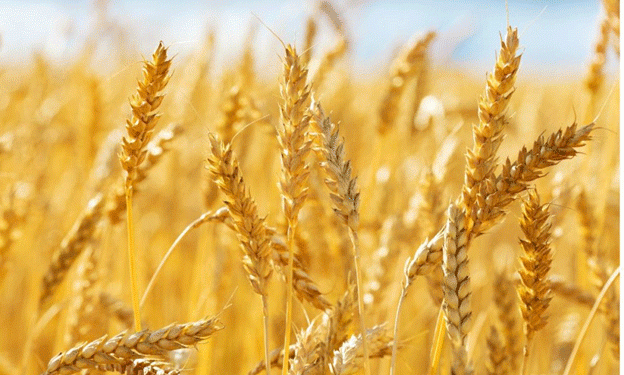As 2024 draws to a close, the global wheat market remains cautious, closely monitoring developments in Ukraine, Russia, and the Middle East. These regions continue to be focal points for traders due to their significant roles in wheat exports and geopolitical influence. The Agriculture and Horticulture Development Board (AHDB) of the United Kingdom noted in its final Arable Market Report of the year that world grain markets were generally trading sideways the previous week, with wheat futures experiencing mixed performance. For the May-2025 contract, Chicago wheat futures fell by 0.6%, while UK feed wheat and Paris milling wheat futures gained 0.9% and 0.7%, respectively. In contrast, Chicago maize futures rose by 0.9% on the week, highlighting a shift in market dynamics where maize is becoming a more favorable crop due to favorable weather conditions and improved yield prospects in key producing regions.
The USDA’s December World Agricultural Supply and Demand Estimates (WASDE) report provided a mixed outlook for the wheat market. It highlighted a more bullish stance for maize compared to wheat, noting that global wheat production was forecast to decline slightly by 600,000 tonnes to 1.060 billion tonnes due to lower harvests in the European Union. The AHDB also cited a forecast from SovEcon suggesting that Russian wheat exports in December could drop to 3.3 to 3.5 million tonnes, down from 4.1 million tonnes in November. This decrease was attributed to logistical challenges and tighter government controls on exports, though it still aligns with the five-year average. In response, the USDA adjusted its global wheat trade forecast down by 1 million tonnes to 213.7 million tonnes, reflecting reduced exports from the EU and Russia, which were more than offset by higher US and Ukrainian exports.
Argentina’s Rosario Grain Exchange revised its 2024 wheat harvest estimate upwards by 500,000 tonnes to 19.3 million tonnes, attributing this adjustment to improved weather conditions during the growing season and progress in harvesting. This makes the 2024 crop the third largest on record for Argentina, behind 2021 and 2019. The AHDB also noted a 500,000-tonne increase in Western Australia’s wheat production, raising its estimate to 10.8 million tonnes due to better-than-anticipated yields, although harvest progress in eastern Australia has been delayed by heavy rainfall. Drier conditions are expected going forward, which should help speed up harvesting and improve overall production.
US Wheat Associates (USW) pointed out that a strong US dollar continued to pressure wheat futures, despite a temporary boost from lower US ending stocks. Basis levels were mixed across export regions and classes, with the Gulf basis remaining flat and the Pacific Northwest Hard Red Spring (HRS) basis firming. The USDA noted that global wheat prices declined month-on-month in its Food Price Index report on December 6th, mainly due to increased supplies from ongoing Southern Hemisphere harvests and improved crop conditions in the Northern Hemisphere for the 2025 harvest. Weaker international demand also contributed to this decline in prices, reflecting a cautious global market outlook.
As we move into 2025, the USDA’s December WASDE report predicted a tighter global wheat supply scenario with lower global consumption and trade. The forecast for the 2024-25 marketing year includes slightly higher ending stocks, reflecting larger beginning stocks offsetting the decline in production. The EU’s production was revised down by 1.3 million tonnes to 121.3 million tonnes due to adverse weather impacting yields in several member states. Brazil’s wheat crop was also revised downward based on updated harvest data, reflecting challenges in reaching previous production targets. The imposition of an export quota by Russia is expected to further constrain exports, with the USDA forecasting a reduction to 47 million tonnes, down from 48 million tonnes due to the restriction on shipments.
The global wheat market in 2024 has been shaped by geopolitical events, weather conditions, and market responses to production changes. The ongoing developments in Ukraine, Russia, and the Middle East, along with climatic shifts, continue to influence trade patterns and prices. The adjustments in global production forecasts and trade flows highlight the need for stakeholders to remain vigilant and adaptable in their planning. As we look to the future, understanding these dynamics will be critical for farmers, agronomists, and industry leaders in making informed decisions regarding seed choices, crop rotations, and market strategies.
Error




